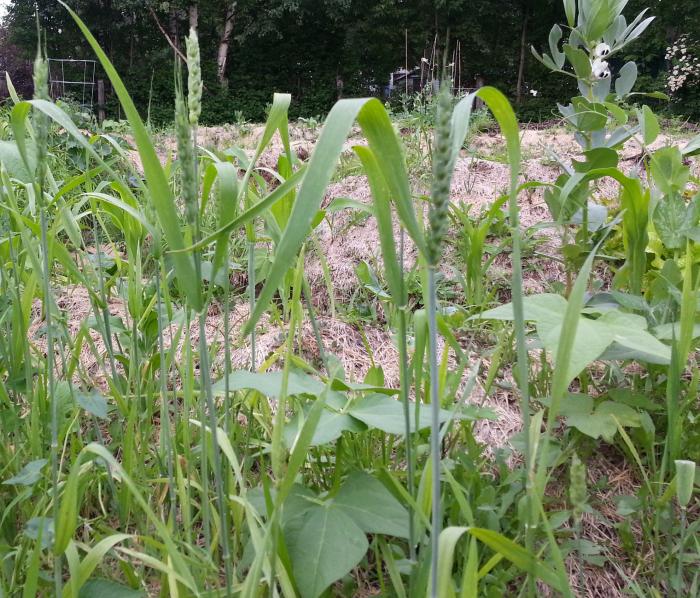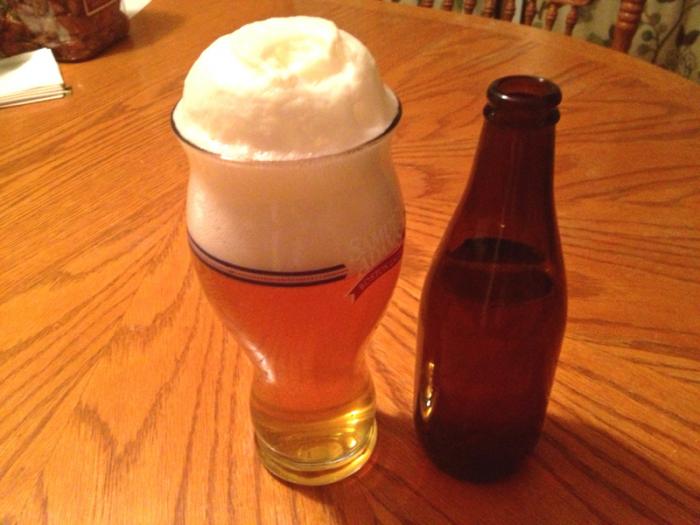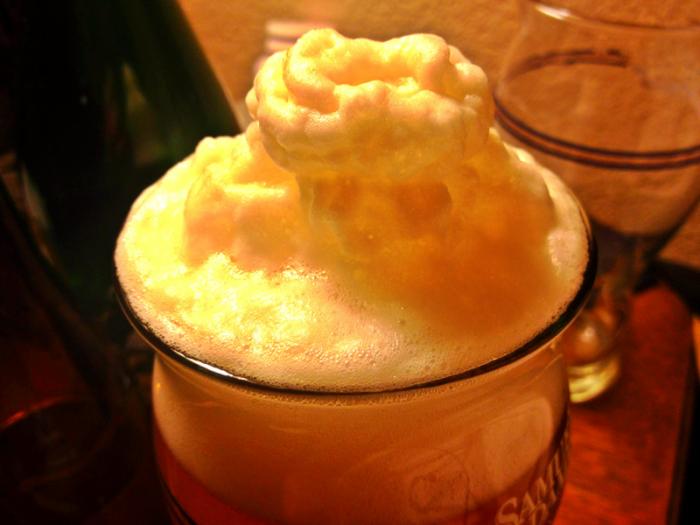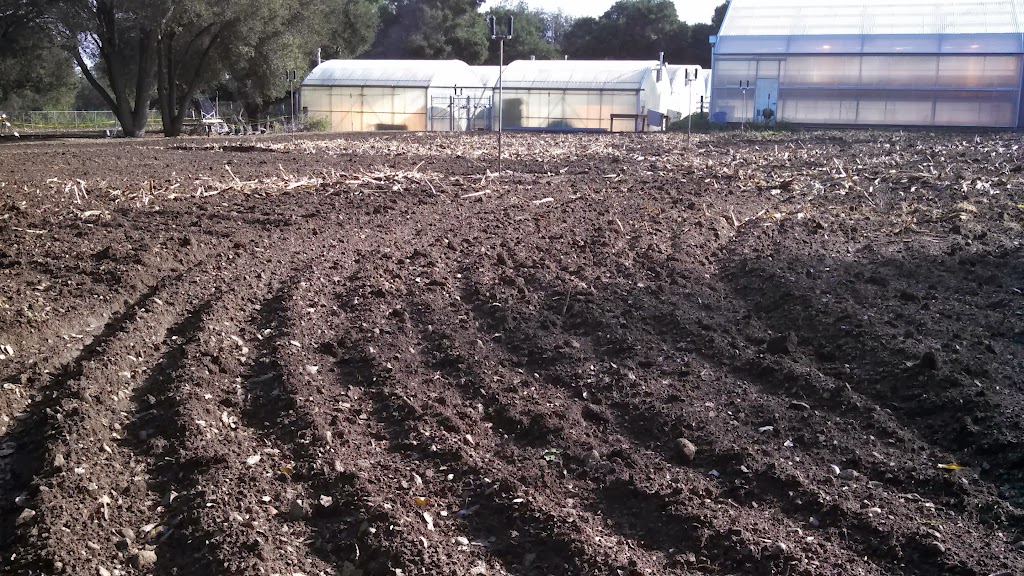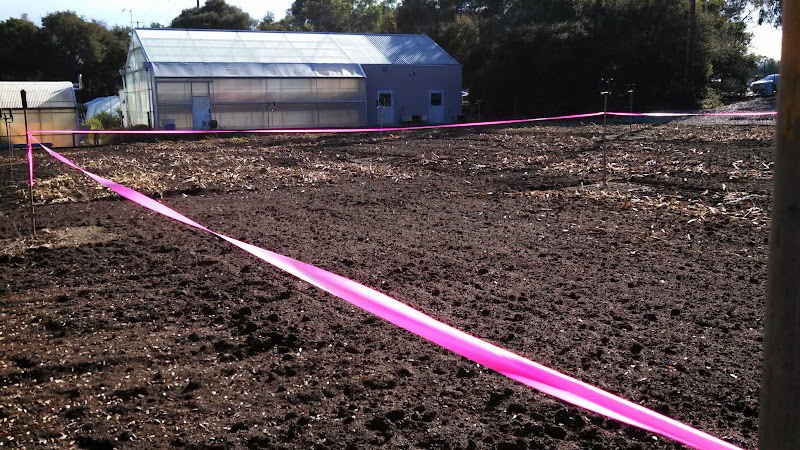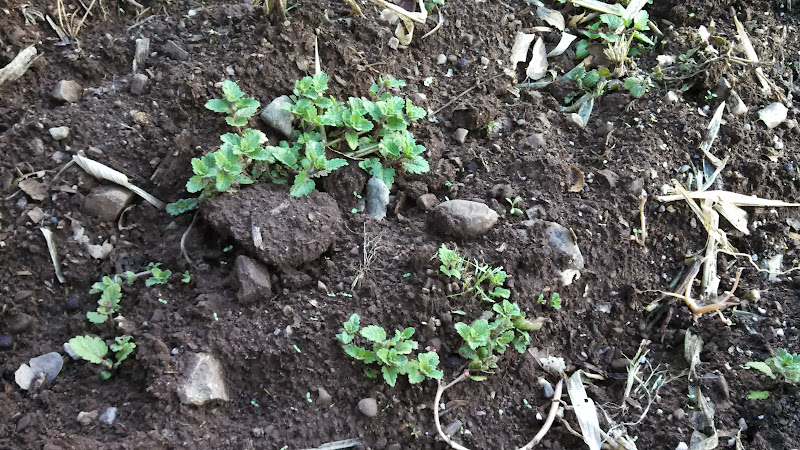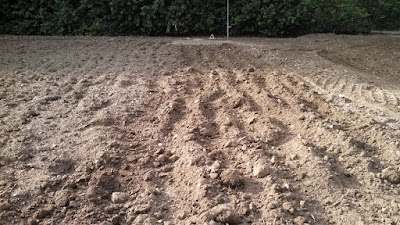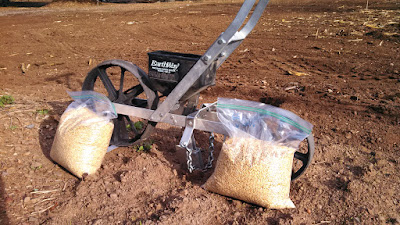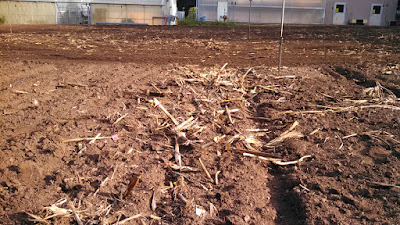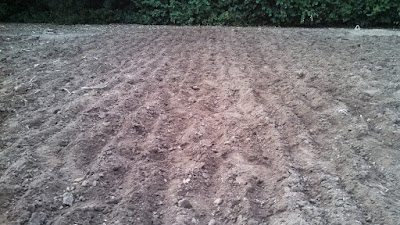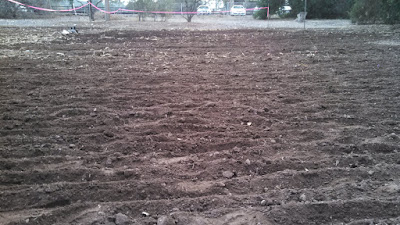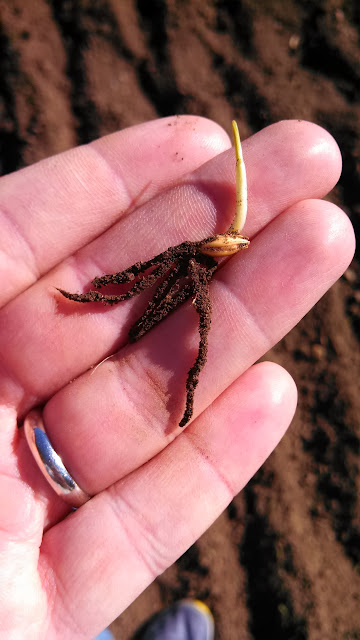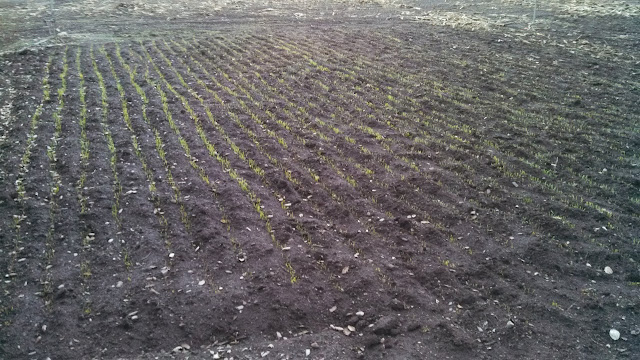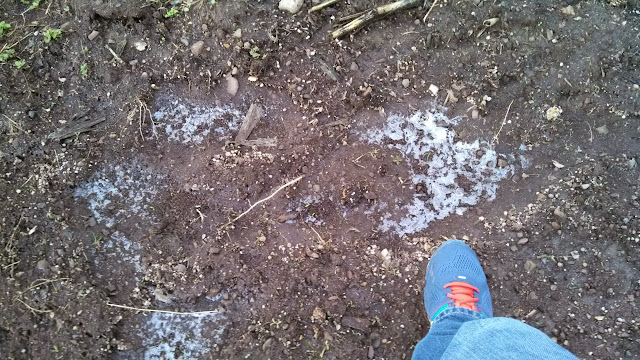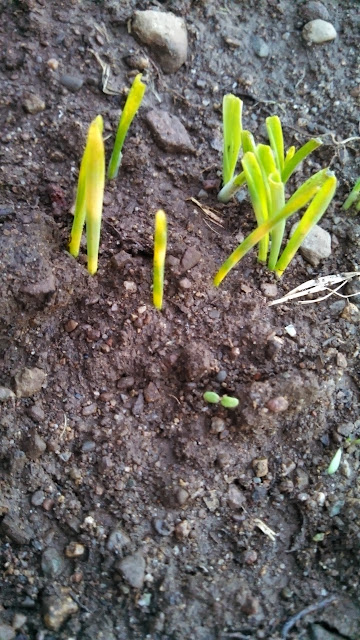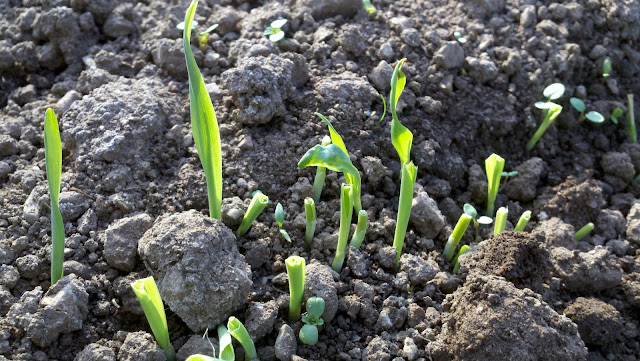To summarize the Conlon experiment I performed two years ago:
Lower field [79 lb/acre N, 2 lb /acre P, 2 lb/acre K, 14" rows of ~ 12 seeds/inch, some fine threshing]
69 lbs
Middle field [80 lb/acre N, 2 lb /acre P, 2 lb/acre K, 14" rows of ~ 24 seeds/inch, rough threshing]
64 lbs
Upper field [33 lb/acre N, 2 lb /acre P, 2 lb/acre K, 14" rows of ~ 12 seeds/inch, rough threshing]
42 lbs
Total 175 lbs, or roughly 2330 lbs/acre. At 50 lbs/bushel, that's 46 bushels per acre -- not terrible, considering a pro in the midwest could get 75 bu/acre. For the highest yielding plot, the lower field, the yield is 2760 lb/acre, or 55 bu/acre, which is really not bad, about 73% of a commercial yield.
So what was wrong with the upper field? Ha, who knows! This experiment had no controls -- fertilization rate, seeding rate, the soil and shading all varied between the three plots.
But I have an answer for the most important question: can a spring barley adapted for growth in the Upper Midwest produce commercial yields in a California winter? Yes, almost.
I got around 73% of an average professional yield. The difference could reasonably have to do with how I managed the crop rather than the genetics of the strain. The plant survival rate was extremely high -- I can at least say that, and my inexperience in planting, fertilizing, and irrigating at proper rates could have easily shaved off a quarter of my yield. That is, there are plenty of factors that could account for the lower (but still not bad!) yield in addition to the strain's genetics.
At the very least, I can conclude that growing a midwest-adapted strain in the Bay Area is not a complete failure. It wasn't wiped out by disease, by pests, or by the switch from spring growing conditions to the Bay Area winter. I would be interested to see what type of yield a skilled farmer could get on a Bay Area farm.
I've been thinking about this recently because I have access to the same sections of the field again this winter! Woo hoooo!
The field is plowed and ready to plant.
I marked it off so it wouldn't get seeded with cover crop:
- So, what to do differently?
I want to try your recommendations (130 lb/acre seed, no weeding) next year.
I planted 1/3 of my field (the middle plot) at 24 seeds / foot, or 90 lb / acre. (This was the seeding rate that two passes down each row with my Earthway seeder gave.) I chose to plant the other 2/3 at 45 lb / acre (12 seeds / foot, or one pass with the Earthway) because light is limited by nearby trees. I was concerned that if I asked my shady field to perform at the high seeding rates recommended for open plains, I might actually reduce yield.
I will definitely do 7.5" rows this year. Thanks to wheatwarden for the suggestion to do so. But how dense to plant? If I were growing Conlon again, I would do about 12 seeds per foot, which in 7.5" rows works out to roughly 100 lb /acre.
But I grew up enough of the bere seed in 2011-2012 to plant a large area! That means I'll be 100% heirloom this time around. It will be really fantastic if I end up with enough bere to malt and make a few batches of beer. You can get bere beers from a few European breweries, but I've never had one. It will just be really fun to finally see the 5g of bere seeds I received from
NPGS finally turn into beer!
A
suggested seeding rate for Bere is 160 kg/ha, or 143 lb/acre. That's not too far away from the suggested rate of 130 lb/acre for Conlon, but it's significantly higher than I planted last year.
On top of that, bere is a much smaller seed than Conlon, so it will require more seeds planted per foot to achieve the same seeding rate on a mass basis. I just weighed 10 of my bere seeds, and they're about 29.4 mg each.
But what if my seeds are smaller than commercially produced bere seeds? What I really need is a suggested seeding rate in units of [seeds / area]. Luckily, that same paper suggests 530 seeds / m^2 for bere, which works out to 49 seeds / square foot, or 31 seeds per foot of 7.5" rows. This is a much higher planting rate of seeds / foot than I used two years ago, which was between 21 and 10 seeds per square foot.
With my measurement of 29.4 mg per bere seed, 31 seeds per foot in 7.5" rows works out to about 156 kg/ha. That's pretty close to the recommended 160 kg/ha, so I guess my seeds are a normal bere weight. That is reassuring, but it means I'll need 10.4 lbs to seed all three plots at this rate, and I only have about 8 lbs of bere seeds! I' think I'll stick to the recommended seeding rate, and start with the areas that yielded the most last time. Then just plant until I run out.
Two years ago, I found I had to push the EarthWay seeder pretty fast to get 12 seeds / ft, so I'll try different speeds with the bere seeds to get something like 15 seeds / ft, and then I can double up on each row to get 30 seeds / ft.
Why plant seeds so densely for bere? I am not really sure. In general, planting too densely can cause plants to compete with one another for light, growing ever higher and eventually lodging as they topple under their own weight. Planting too sparsely can lead to more tillering and uneven (and late) maturation. The later tillers simply get a later start, and therefore produce mature heads later. Each variety has its own sweet spot of planting rate and apparently bere's is just higher than Conlon's.
- So, how much to fertilize?
The
Marin, Chang, and Wishart paper I linked to above suggests that bere doesn't increase its yield much in response to nitrogen addition. The anecdotes surrounding this variety are that it was
bred in nutrient-poor Scottish soils, and so doesn't require much nutrient addition.
Too much nitrogen can lead not only to poor malting characteristics, but also lodging, a condition I've experienced every time I've grown up bere so far! So, I think I won't add any nitrogen on top of the nitrogen already amended to the soil in the form of compost.
I also plan to do a few deep irrigations throughout the growing season to promote deep root growth -- this may do something to ward off lodging.
I'll check for aphids before elongation and decide whether to do a spray.
I could spray for weeds right now, because there sure are some already popping up:
Glyphosate is safe, and I could use it with no problems. But since this is a historical variety, I'm curious to see what will happen if I only use historical methods. Maybe if I simply cultivate the field by hand and skip the glyphosate, I'll still get a decent yield. This would mean if aphids show up, I'll have to find a 19th century insecticide to spray. If the case arises, I'm sure I can find some nicotine somewhere...
Besides, that, I plan to set it and forget it. I learned a lot last time about how to farm a small grain, and this time I'm going to take advantage of that experience to do less work!


